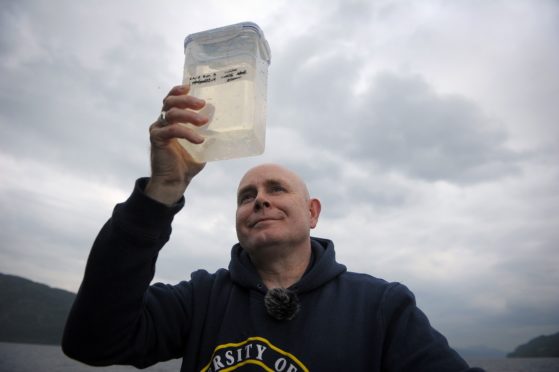“Nessie ‘relative’ spotted in Kenya”, read the headline.
It was sitting above an article about a Scottish scientist who had discovered a creature in a volcanic lake that he believed could belong to a species similar to the Loch Ness Monster.
“The creature’s ancestors could have been living undisturbed in a vent beneath the lake for several million years,” it claimed. “The conditions are near perfect.”
The date? April 1, 1998…
I love a silly April Fool’s hoax. There have been some absolute gems in the past, including the report on Radio 4’s Today programme in 2004 about plans for an Archers theme tune remix and the Swiss Spaghetti harvest, shown on Panorama in 1957.
But Nessie’s long-lost East African cousin remains my favourite.
So much so, I’ve still got a photocopy of the page from the Kenyan newspaper in which it featured – hence my ability to quote it all this time later. I think I remember it so well, firstly because it seemed entirely plausible, although I was only 13, and probably easily duped. But also because it underlined the international reach of the legend of the Loch Ness Monster, which fascinated me from a young age.
It does to this day. Therefore, I guess it will come as no surprise that my daughter Maya’s teddy collection includes a bright-green Nessie, clad in a kilt and tartan tammy.
Clearly, I’m not alone in being drawn in by this captivating tale, which can be traced back to 565 AD when Irish missionary St Columba reportedly saved a man from being attacked by a beast in the loch. And in the decades since the first modern sighting in the 1930s, there have been multiple efforts to prove her existence, including a BBC-funded venture in 2003 which used 600 sonar beams.
The latest team of scientists to study the loch, which is the largest body of water by volume in the UK, unveiled their findings this week, concluding that the monster might be a giant eel.
The group from a New Zealand university, who used DNA sampling techniques to catalogue what lives beneath the surface, found the presence of around 3,000 species.
No evidence of any reptilian sequences was uncovered, throwing a wet blanket on the idea that plesiosaurs, which could grow up to 15 metres long, might have survived the dinosaur extinction. The study leader said he was surprised by the volume of eel DNA, however, adding he couldn’t rule out the possibility that eels present had grown to an extreme size.
There was a great big, tongue-in-cheek caveat though – the team didn’t know if the eel DNA detected was from one gigantic eel or lots of small ones.
I’ll confess that when the scientists announced to top billing last month that they had identified a credible theory for sightings of the Loch Ness Monster, I was pretty excited, eager to find out what the biological explanation would be.
Maybe the mystery was about to be solved?
I was, as a result, a tad disappointed. This was certainly my fault for setting my expectations too high, however, and the team deserves huge credit for skilfully securing such extensive publicity for their work, in turn raising the profile of environmental DNA research.
For them, it was and is – quite rightly – all about the science, rather than folklore. It should be noted too that the project will eventually provide a publicly available database of all the species in the loch, which could help monitor changes in biodiversity.
At any rate, if it came to it, I’m not sure I’d really want to know the truth about Nessie. I’m not convinced I’m ready to hear it.
It is best, perhaps, to let sleeping monsters lie.
The Loch Ness Monster is fascinating precisely because we don’t know.
On one level, it seems a shame to debunk a story that has enthralled us for many years – not to mention bolstered the Scottish tourism industry. Thus, in that spirit, I will keep on believing. And even if Nessie was proven not to exist beyond a shadow of a doubt, you still wouldn’t catch me swimming in Loch Ness, which is no mean thing as for me, outdoor swimming is one of life’s unrivalled pleasures.
Okay, I wouldn’t go in because it’s not recommended due to the bitterly cold water – just 5C – all year round. But I wouldn’t be able to keep the thought of Nessie nibbling on my toe – or a gigantic eel for that matter – out of my head either.
All of this said, I fully understand the drive to get to the bottom of the legend, to rationalise it. It’s the job of scientists – and humans more widely – to look critically at the environment around us and to ask questions.
Moreover, scientific endeavour has undeniably brought about so much good throughout history, although admittedly evil too.
It has been used to brilliant, life-saving ends.
But in a world where much has been explained, where we’ve deciphered so many of nature’s secrets, surely there’s no harm in a little bit of enigma.
Surely there’s room for Nessie.
Lindsay Razaq is a journalist and former P&J Westminster political correspondent who now combines freelance writing with being a first-time mum











